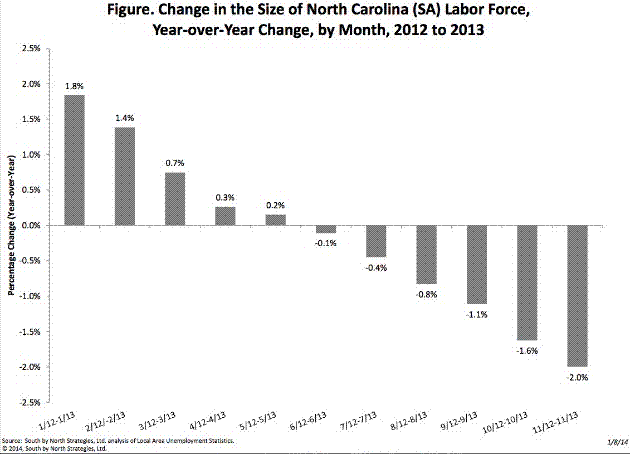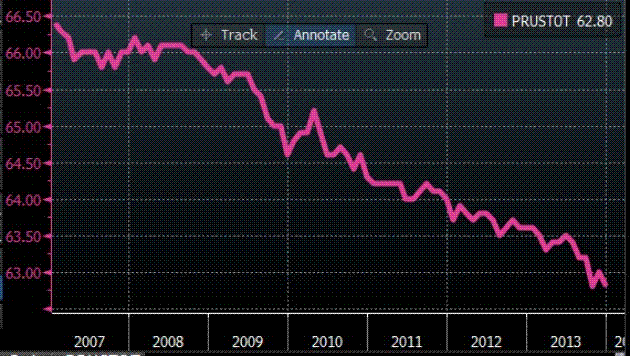Bloomberg Businessweek
How Killing Unemployment Benefits Could Kill Economic Growth
On Jan. 10, the monthly jobs report showed that the U.S. economy added only
74,000 jobs in December—and that people were giving up on finding employment and
leaving the work force in droves. (Thatfs why the unemployment rate fell to 6.7
percent; you have to be looking for a job to count as unemployed.) Then, last
Tuesday, the Senate voted down two proposals to revive federal emergency
employment compensation (EUC) for 1.3 million jobless workers that expired in
late December. Cutting off these people, and the millions more who would have
relied on the program this year, is almost certain to exacerbate the negative
trend of people leaving the labor force that stood out in Fridayfs jobs
report.
In fact, itfs already happening. Last June, North Carolina cut off federal
unemployment benefits to its workers (for reasons I explained here).
As the only state to do so, North Carolina is a harbinger of what could happen
nationally, now that the program has ended and appears unlikely to be revived.
This chart, from John Quinterno of the Chapel Hill, N.C., economic research firm
South by North Strategies, shows what happened to the statefs labor force before
and after this change:

South by Northwest Strategies
The graph shows the monthly percentage change in the size of North Carolinafs
labor force, seasonally adjusted, year over year. So what youfre seeing on the
left side of the chart is positive rates of growth during the first five months
of the year: North Carolinafs labor force was larger in the early months of 2013
than it had been in 2012. But that growth rate slowed and—after the state cut
off benefits in June—turned negative. Through the rest of last year, that
negative trend intensified as people dropped out and the labor force got
smaller.
Why would jobless workers quit looking for work when their unemployment
benefits run out? Well, one benefit of federal EUC is that it requires
recipients to be actively looking for work. When it is cut off, many give up
because the labor market is still very weak and there arenft jobs available; the
U.S. counts three available workers for every job opening right now.
If the rest of the country follows the pattern of North Carolina, most of
those 1.3 million people will give up looking and fall out of the labor force,
squandering a lot of economic potential. Thatfs bad news for the economy, since,
as the chart below shows, the national labor force participation rate has been
falling for years:

Bloomberg Businessweek